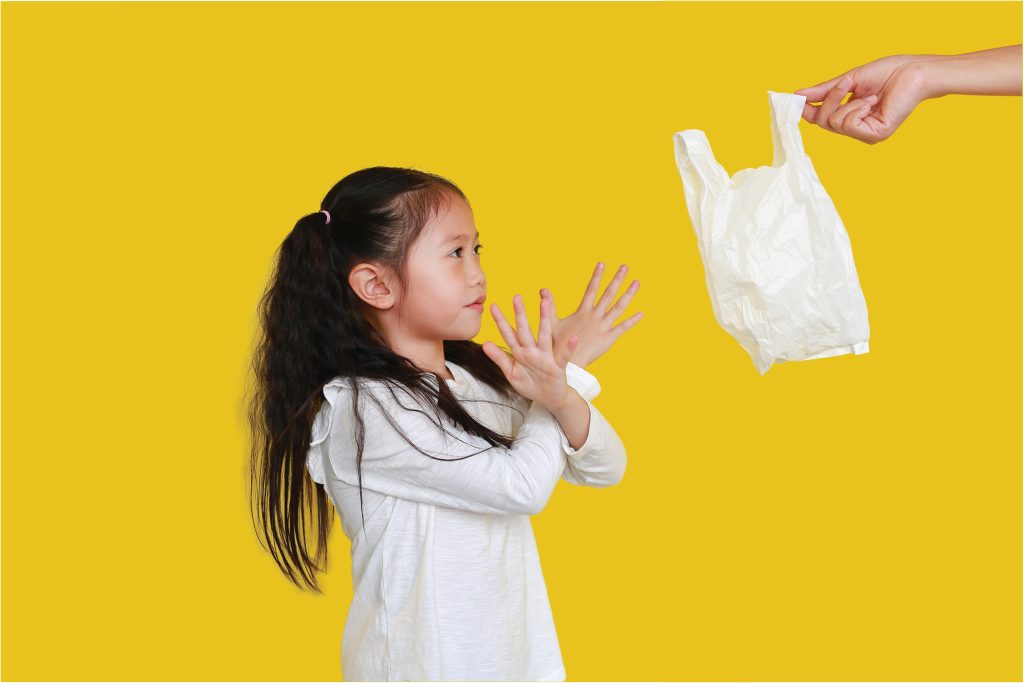Plastic is everywhere. It’s cheap and versatile, but it’s also a common environmental pollutant. Every year, one to two million tons of plastic find its way into our oceans, impacting ecosystems and wildlife. While it may seem impossible to separate our daily lives from single-use plastics, there are some steps you can take to make your home more sustainable.
- Cleaning Up: An easy way to reduce plastic waste is to pick cleaning products that don’t use plastic packaging. You also can find refillable options of products, such as window cleaner, dishwashing liquid and more. For cleaning brushes and cloths, choose ones with natural fibers rather than synthetic, or consider reusing old socks or towels instead.
- Raising the Bar: Skip liquid hand soap, shower gel, face wash and shaving products. Instead opt for bar options of these products, including shampoos and conditioners, to reduce plastic bottles. Look for packages that are compostable cardboard. You can even experiment with creating your own personal care products, such as soap, shampoo, shower gel, toothpaste, scrubs and lotions.
- In the Bag: Instead of plastic bags provided at the grocery store, bring your own reusable shopping bags. To make sure you don’t forget it, leave it in an easily accessible place such as by the front door or in the car. Make sure you return it to its usual spot after you unpack your purchases—that way, you’ll always know where it is. You can also use your reusable bags for produce instead of single-use plastic ones.
- Party Smarter: Celebrate without balloons or other single-use decorations made from plastic. Sustainable decorations include bunting, tassels, tissue pom poms, lanterns and fresh flowers. If you’re having a themed party for a child, consider making your own decorations or borrowing some from friends, family or neighbors before buying anything new.
- Take a Sip: Rather than using plastic straws, opt for sustainable options like stainless steel, bamboo or glass. There are foldable options that can easily be kept in your purse or pocket for when you are at a restaurant or bar. When ordering, just make sure you request that it be brought to you without plastic straw. If you receive a plastic straw, don’t throw it away. Instead, reuse it.
- Furry Friends: Pet toys made of plastic can be easily shredded by cats and dogs. Not only are they less durable than sustainable options, injecting fragments can lead to an expensive vet visit. Instead choose toys made from materials like wood, rope and hemp. When dealing with pet waste at home, skip the tiny plastic bag. A shovel or pooper scooper can be used to deposit waste directly into the trash. There are also compostable bags that will work if you have no reusable option.
- It’s a Wash: When buying detergent and fabric softener, look for options that can be purchased in bulk or have refillable options. If you’re hanging laundry to dry, grab metal or wooden clothing pegs instead of the less durable plastic ones. You also can prevent microplastics from entering the waterway by opting for clothes that use natural fibers.
- Smile Brighter: Most toothbrushes still contain plastic bristles, but you can reduce plastic by picking one with a replaceable head, so you are not buying an entirely new toothbrush every few months. You also can choose a handle made from sustainable materials like bamboo, just make sure to cut the bristles off if you plan to compost it when you’re finished. Companies are also coming out with more options for plastic-free dental floss and toothpaste.
- Better Bottles: Stay hydrated with a reusable water bottle to eliminate single-use plastic bottles. Stainless steel is a durable plastic-free option, or you can repurpose household items like glass jars or bottles.
- Diaper Do’s and Don’ts: Reusable diapers are a great choice for sustainability, but they aren’t the only way to reduce plastic waste. There also are compostable and biodegradable disposable diapers, and hybrid options combine a reusable cloth insert with a durable, leak-proof outer diaper. You also can reduce plastic use by opting for reusable diapers at home while taking advantage of the convenience of disposable ones when on the go.
Source: Plastic Free Foundation
